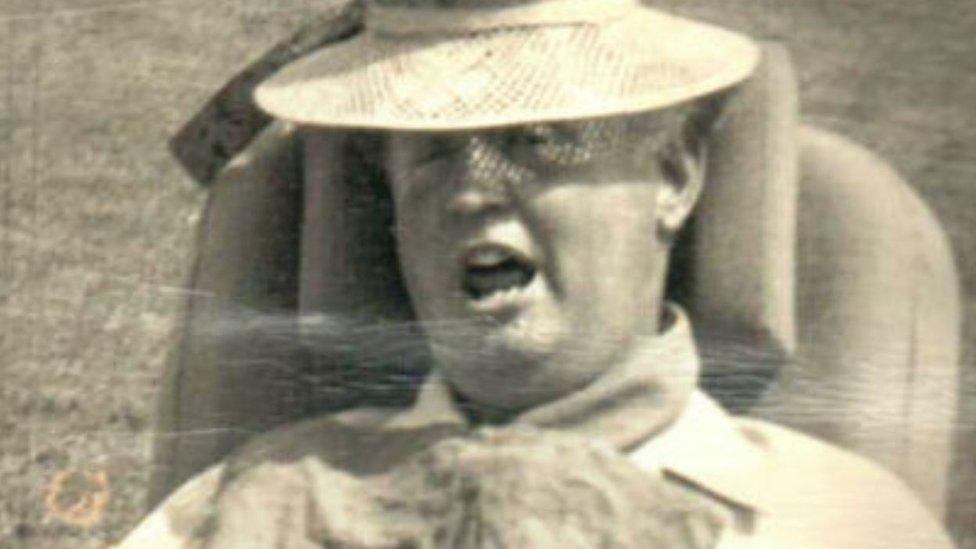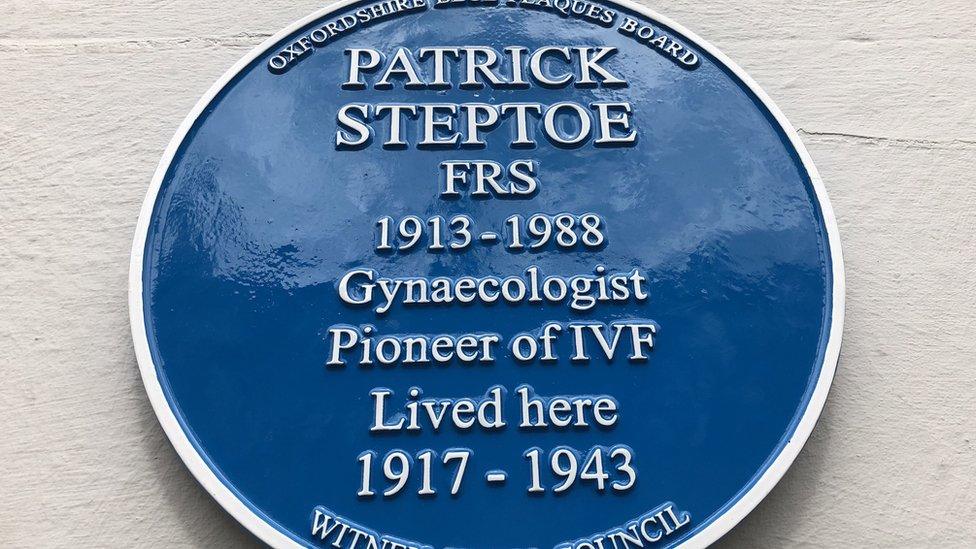Blue plaque marks life of Robin Cavendish MBE
- Published

Robin Cavendish life has been marked with a blue plaque
A blue plaque has been put up at the home of disability rights advocate Robin Cavendish MBE to honour his achievements.
Mr Cavendish was 28 when he was paralysed from the neck down after being struck down by polio in 1958.
Despite being given a prognosis of three months, he went on to live until the age of 64. The plaque will be at his former home in Oxfordshire.
Mr Cavendish's life was immortalised in the 2017 film Breathe.
The father-of-one, from Derbyshire, contracted polio while in Kenya and became dependant on a mechanical respirator.
Despite doctors' warnings he would not survive out of hospital, Mr Cavendish was discharged in 1961, setting up home in Drayton St Leonard, south Oxfordshire.
'He'd be proud'
Spurred by a desire to be more mobile, he developed the first wheelchair with a built-in respirator, with the help of his friend Prof Teddy Hall.
He went on to raise funds so the machines could be available to others.
Mr Cavendish oversaw the creation of Netley Waterside House in 1972 - a complex on Southampton Water providing a holiday getaway for disabled people. He died in 1994.
His son Jonathan was at Sunday's ceremony to see the blue plaque hung on the Old Rectory residence, home to his parents for 33 years.
"My father would be very proud and my mother, who is very much around, is thrilled," he told the BBC.
"It's a great token of appreciation from everybody for all his work."
Mr Cavendish's life was the subject of the film Breathe, where he was played by Oscar-nominated actor Andrew Garfield, and his wife Diana was portrayed by Golden Globe-winning and Oscar-nominated Claire Foy.
- Published7 June 2019

- Published4 May 2019
